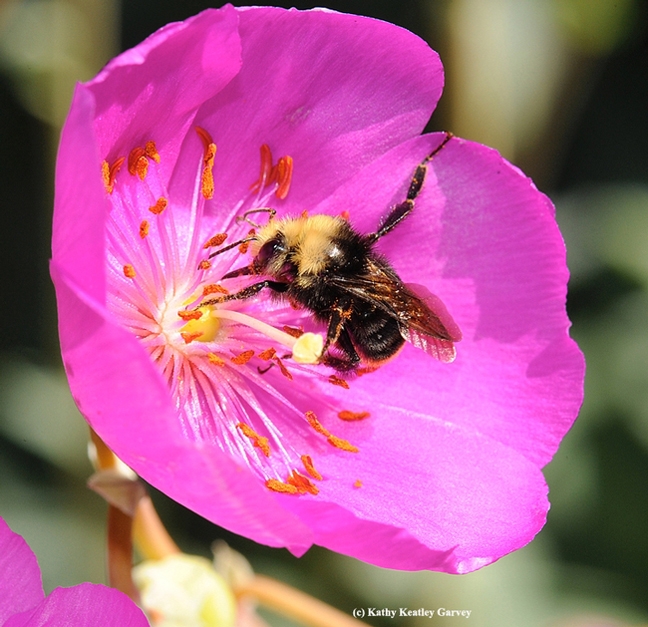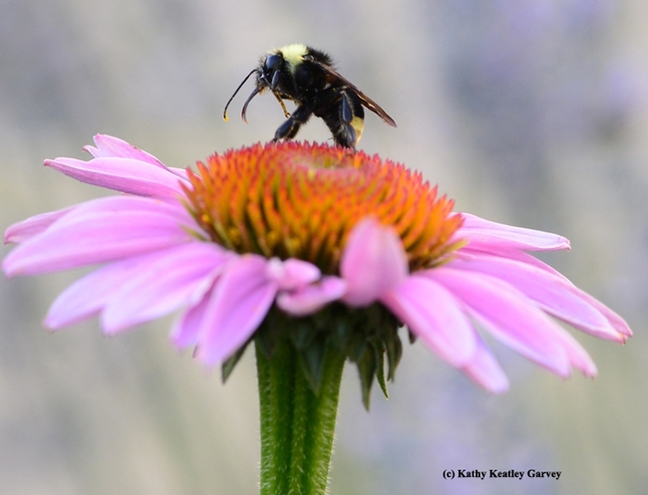
For me, it's zero, zilch, nada.
They're out there, though. Talent insect photographer Allan Jones of Davis, shared some of his images that he captured this year.
Bumble bees, however, are declining throughout the world, and it would be "a frightening thought" if bumble bees were to go from declining to extinct, said native pollinator specialist Robbin Thorp, distinguished emeritus professor of entomology at the University of California, Davis.
He and fellow bumble bee authority Sheila Colla of Eastern Canada are the co-coordinators of the North American (United States and Canada) Bumble Bee Species Conservation Workgroup for the International Union for Conservation of Nature (IUCN).
Thorp and Colla are featured in a newly released Radio-Canada video on declining bumble bees.
The six-minute version was broadcast last weekend. You'll hear the news reporter speaking French and Thorp and Colla speaking English as they talk about the declining bee population:
Bee breeder-geneticist Michael "Kim" Fondrk of UC Davis, now retired, is featured in a segment on honey bee instrumental insemination:
https://docs.google.com/file/d/0ByTaUv9eMDXLR0RQRWVXUnFWU2M/edit
A one-hour show, also broadcast last weekend, and more about honey bees, is at
Attached Images:

The yellow-faced bumble bee, Bombus vosnesenskii, on rock purslane. (Photo by Kathy Keatley Garvey)

A black-faced bumble bee, Bombus fervidus (formerly Bombus californicus) on a coneflower. (Photo by Kathy Keatley Garvey)

This is the Western bumble bee, Bombus occidentalis, which is declining rapidly. (Photo by Kathy Keatley Garvey)

The yellow-faced bumble bee, Bombus vosnesenskii, with a load of red pollen. (Photo by Kathy Keatley Garvey)